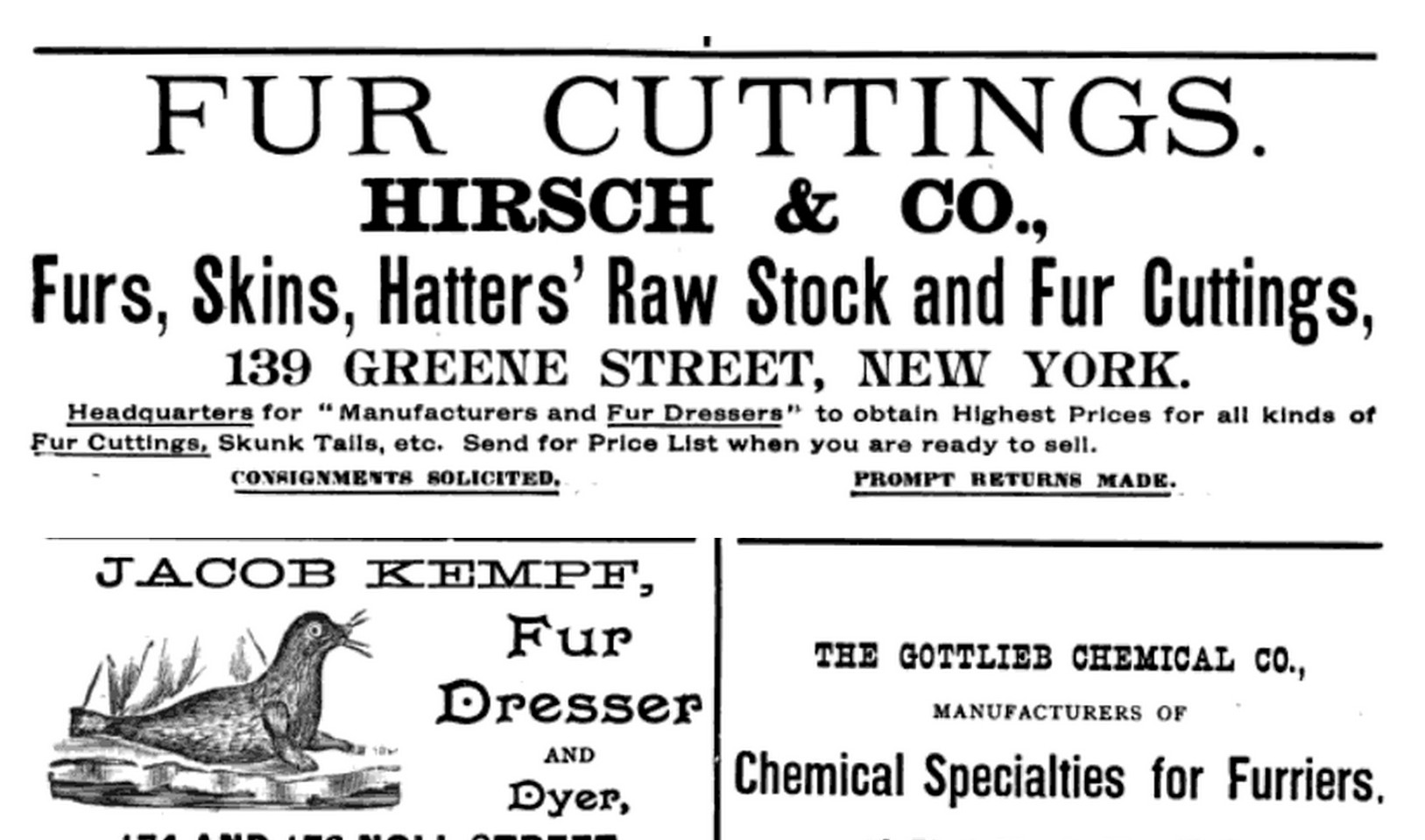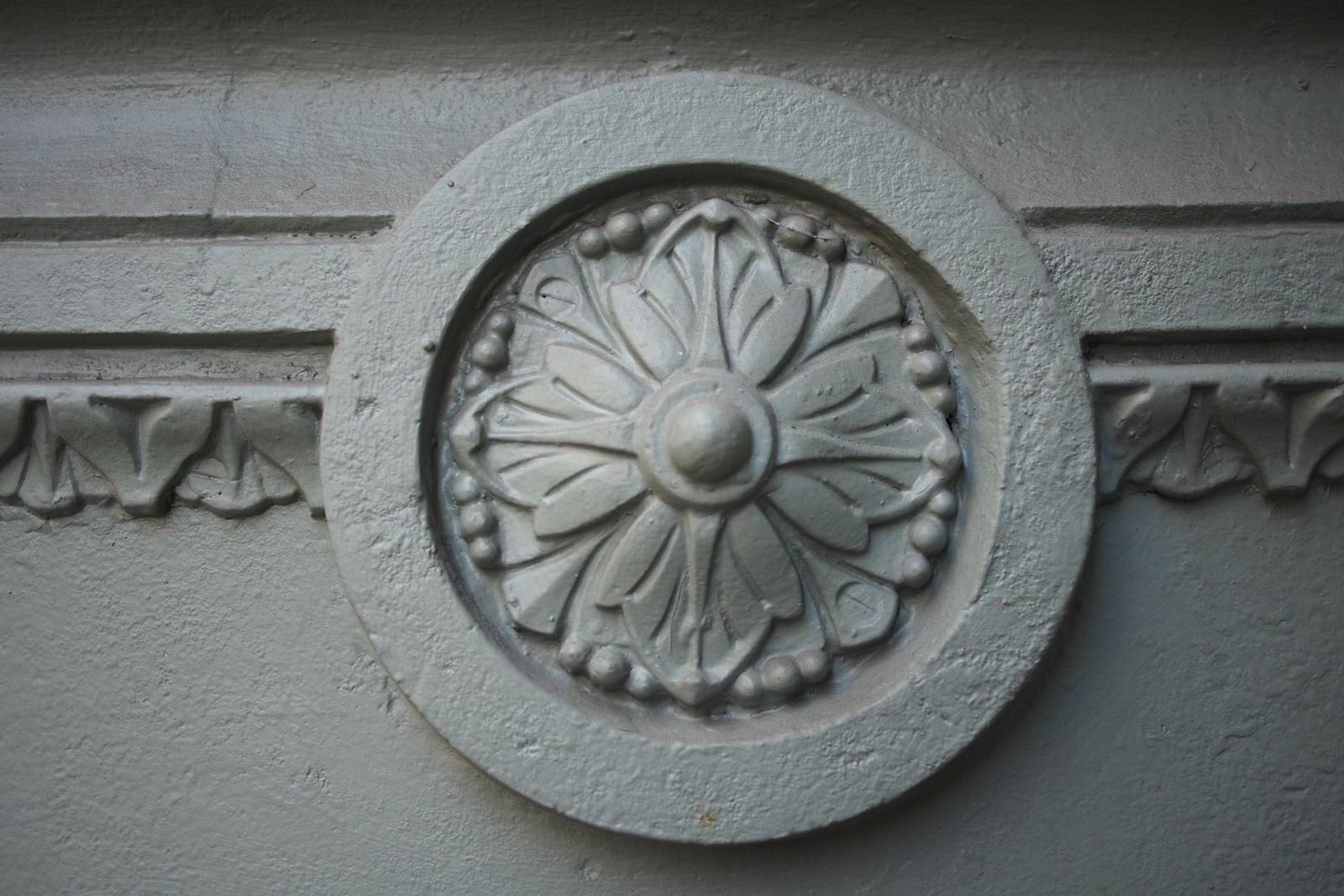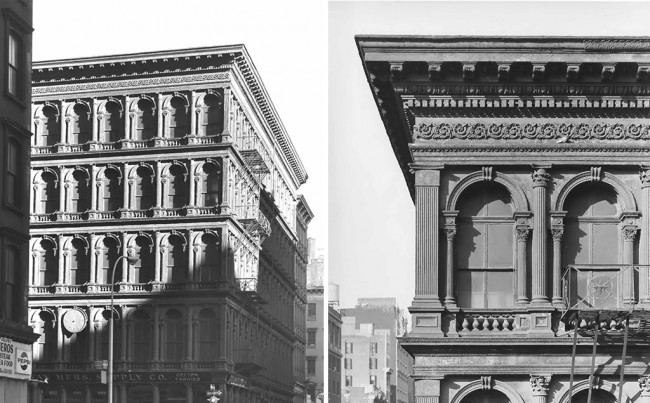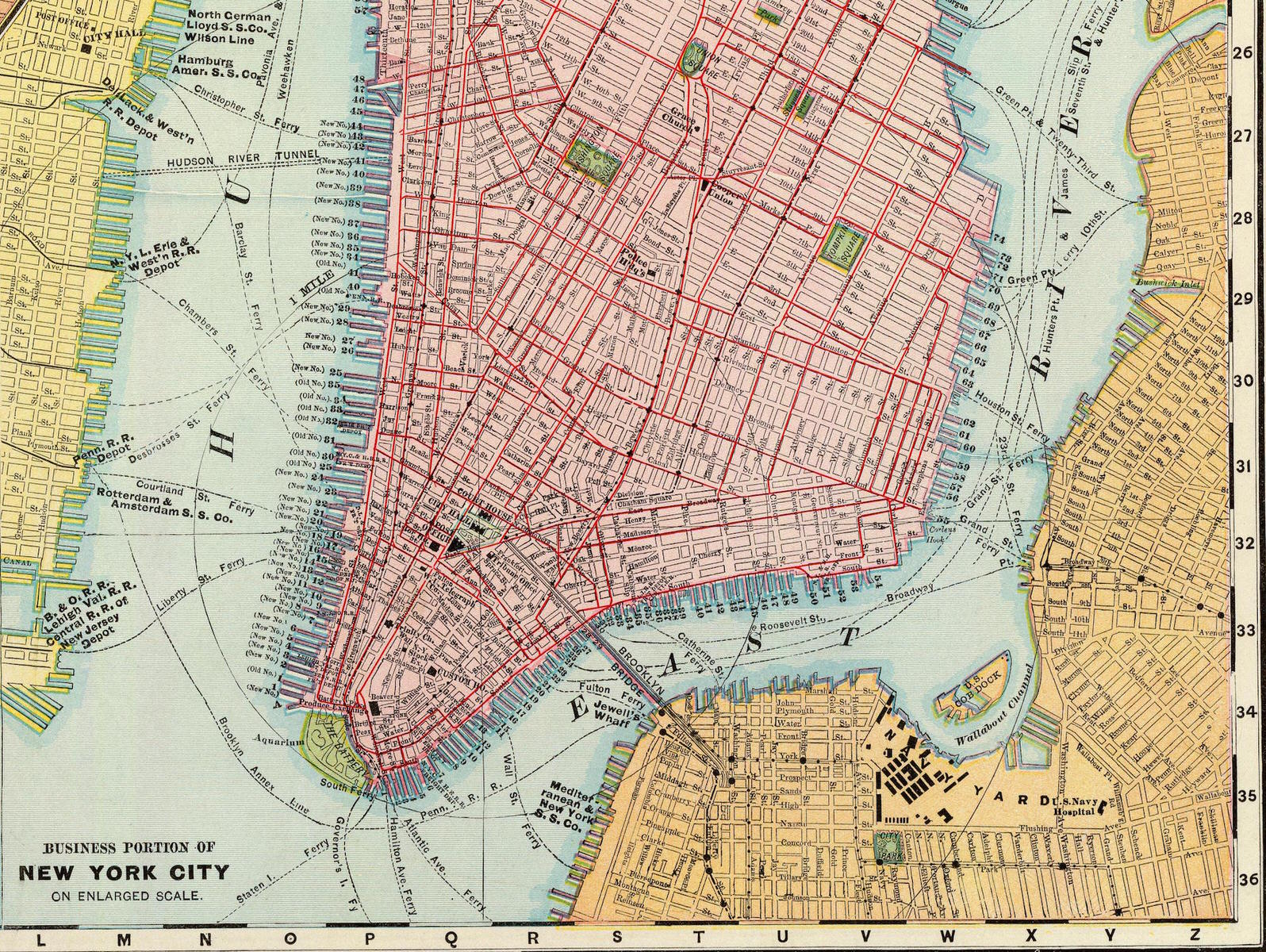By 1883, all but two of the brick houses on Greene Street have been razed to the ground.
Cast iron factories and warehouses rose in their place — at 5 or 6 stories, these buildings were at the technological frontier for modern construction.
Factory at 101 Spring Street, designed in 1870 by architect Nicholas Whyte. Photo: Paul Katz, 1972, National Public Radio






Factory: 132-140 Greene Street, 1950s, from Winston Weisman Collection of Architectural Photographs, New-York Historical Society.
Below: Haughwout Building, from Historic American Buildings Survey, Library of Congress, Prints and Photographs Division. Urban Omnibus.


Archival footage: 6th Avenue El, 1920s-1940s, public domain, found on YouTube
Zoom to map
Map of New York City, by Rand McNally and Company, 1897. David Rumsey.
Pier 45
Pier 42
Pier 34
Greene Street

1876 map of the New York Central and Hudson River Railroad. Wikimedia Commons.
Greene Street was reborn as the center of the profitable garment industry.